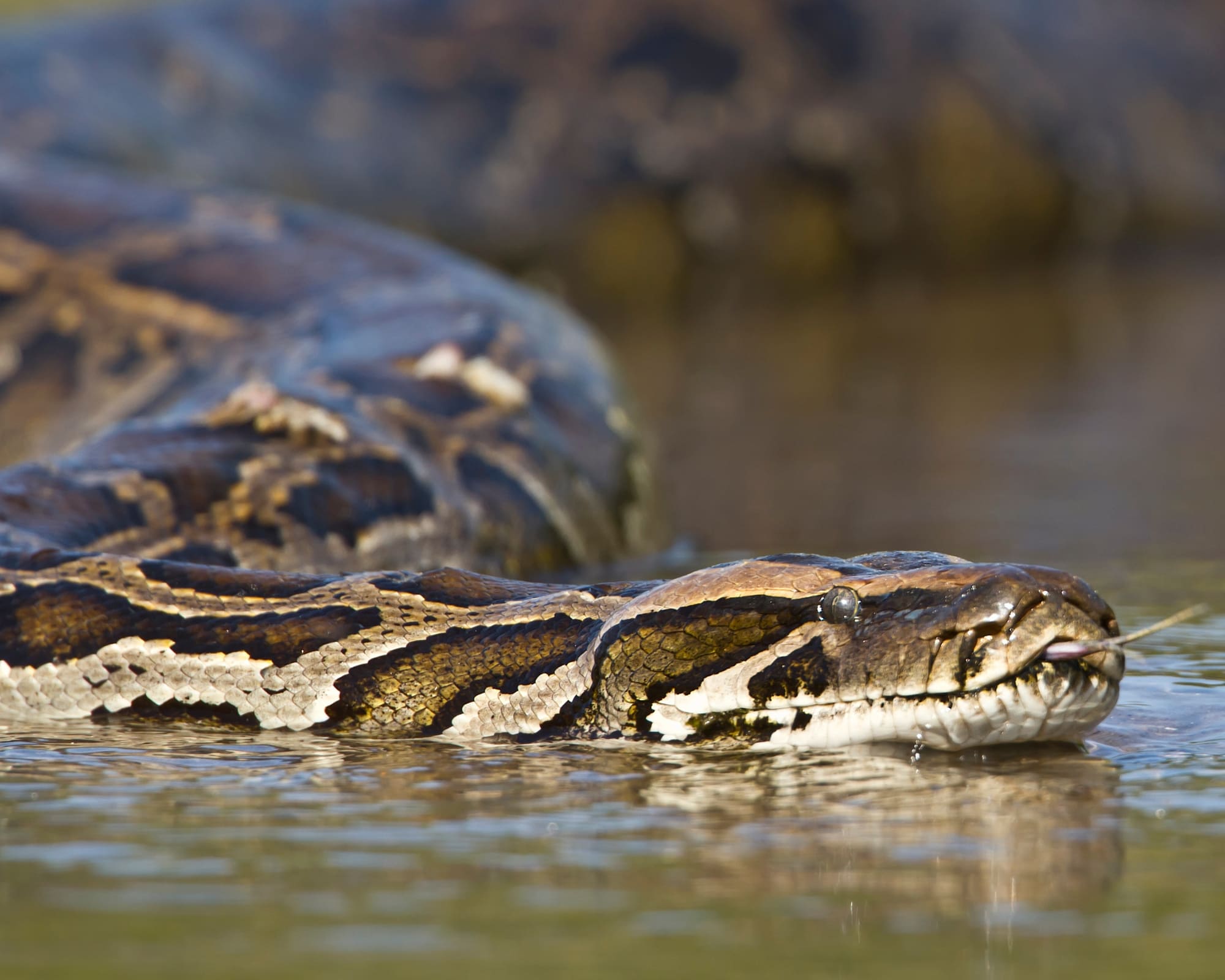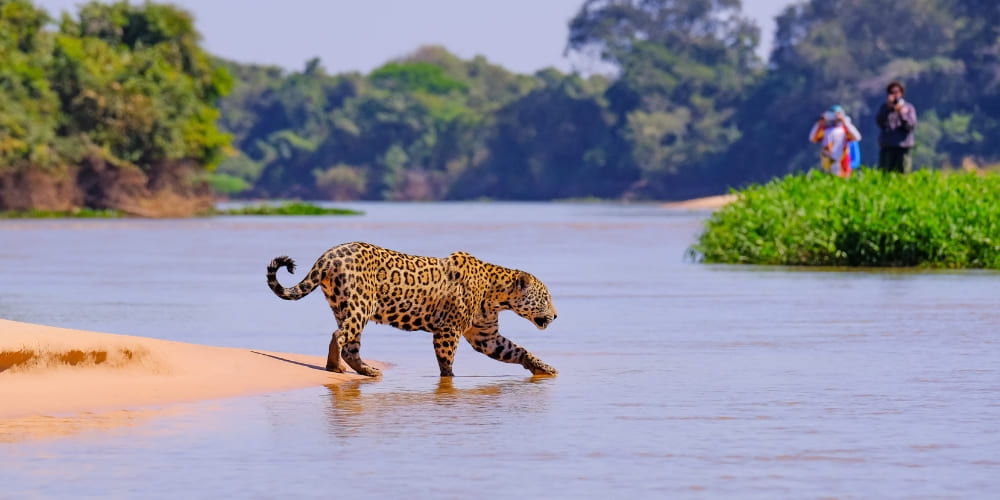Discover incredible wildlife, from jaguars and macaws to anteaters and caimans, in the world’s largest tropical wetland.
Do you know the Pantanal is one of the most biodiverse regions on Earth? Imagine watching Jaguars sunbathing by the riverbanks, Macaws flying overhead, and Giant Anteaters crossing wide savannahs. There are thousands of species of fauna and flora native to this region.
Unlike the dense Amazon, the Pantanal’s open landscapes and seasonal floods offer ideal conditions to experience real-life encounters with Pantanal wildlife. This vast wetland is home to over 650 bird species, 120 mammals, and hundreds of reptiles and fish.
That’s why PlanetaEXO, a platform specializing in ecotourism in Brazil, including curated tours in the Pantanal, created this complete guide to the most unforgettable Pantanal wildlife species.
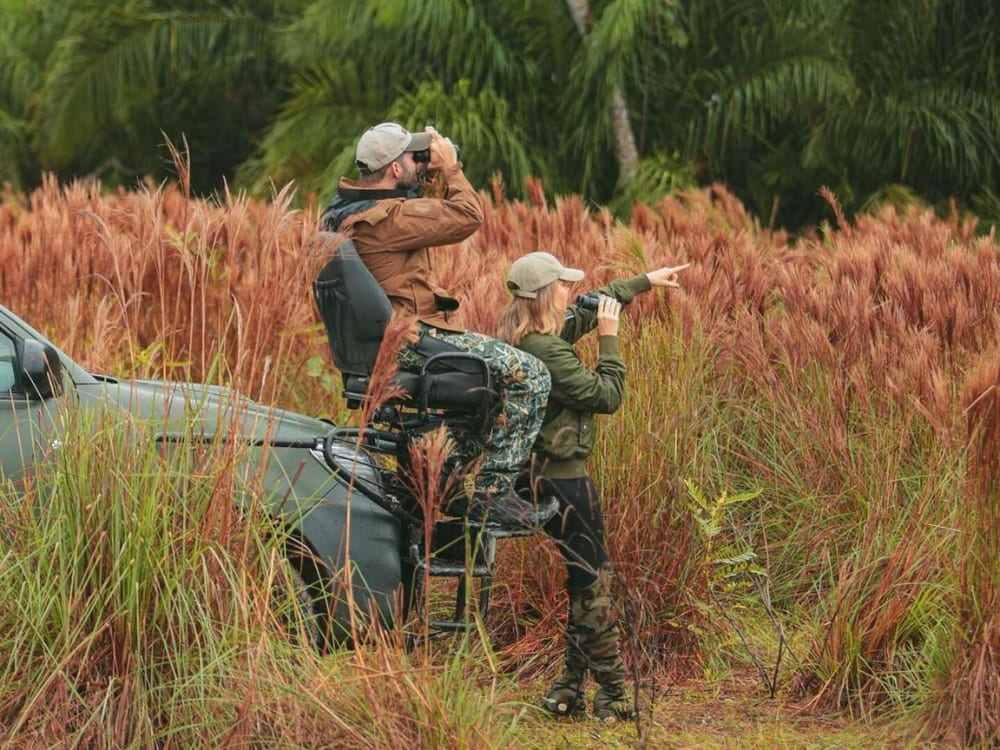
@caimanpantanal
You’ll learn which animals to look for, where to find them, and when to go, all while traveling responsibly and supporting local communities. Therefore, check out the most amazing 15 Pantanal Wildlife Animals and Facts:
1. Jaguars: The Star of the Pantanal
The Jaguar is the undisputed star of the Pantanal. It’s the largest feline in the Americas and a powerful predator capable of taking down caimans, deer, and even anacondas.
You may be wondering when the best time to see jaguars in the Pantanal is: It’s during the dry season, especially from July to October. Jaguar sightings are frequent along the rivers in northern Pantanal, particularly in the Porto Jofre region, considered the best place in the world to see wild jaguars.
Here are a few key facts that make jaguars so unique:
- They are excellent swimmers and often hunt in water.
- The Pantanal is the largest jaguar sanctuary on Earth, containing roughly 20–25% of the global jaguar population (between 4,000 and 7,000 individuals).
- Their bite force is among the strongest of any mammal, allowing them to crush bones and shells.
- Jaguars are solitary and territorial, each requiring a large area of intact habitat.
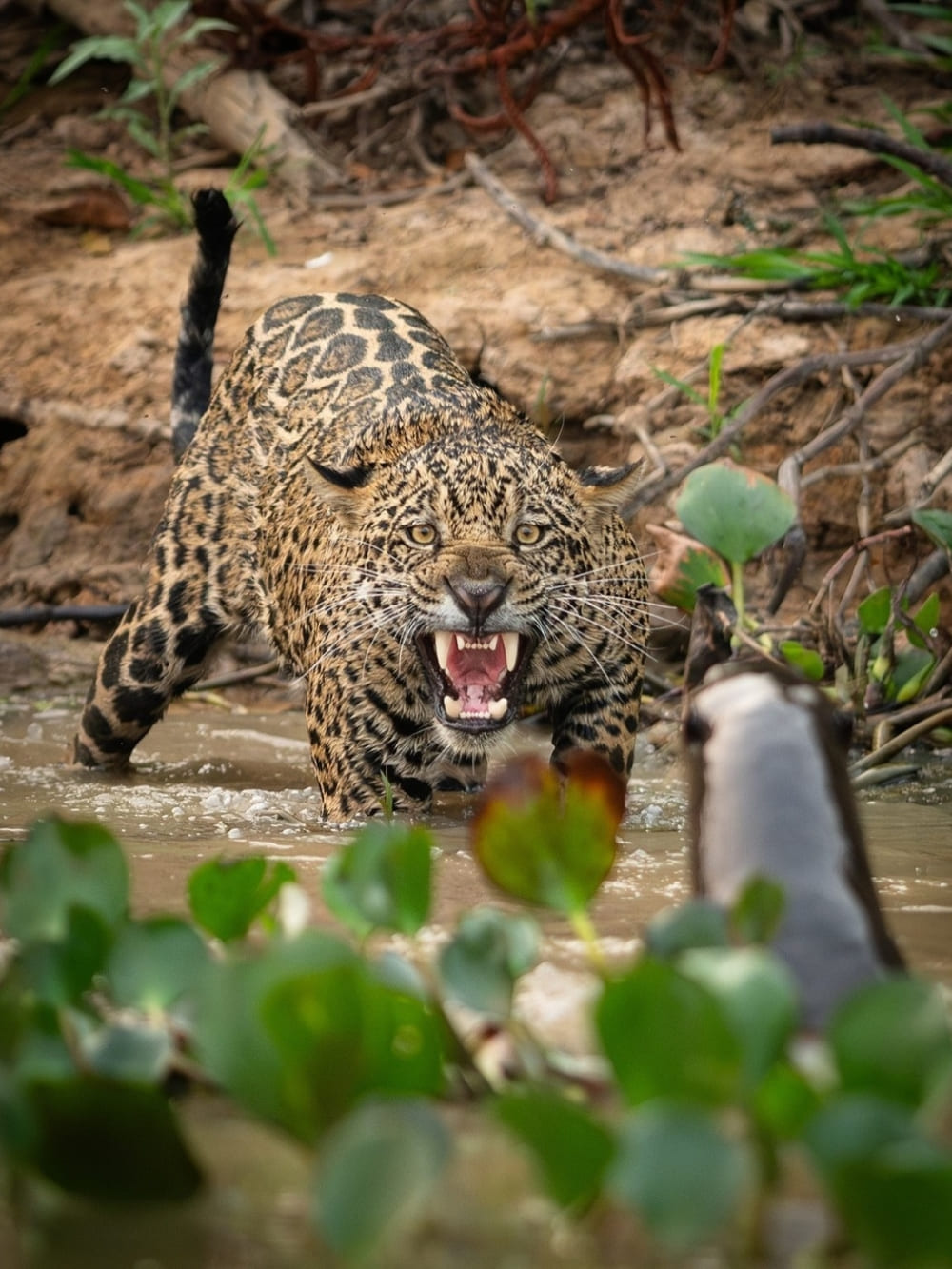
@octaviocampossalles
In the southern Pantanal, jaguar sightings can happen year-round in protected ecological reserves. These safaris are usually done in 4×4 vehicles, offering a more terrestrial experience compared to the river-based excursions in the north.
👉 See how sustainable tourism in the Pantanal helps protect jaguars and other wildlife
2. Capybara: The World’s Largest Rodent
Capybaras are perhaps the Pantanal’s most recognizable residents. These sociable, gentle animals are often found lounging in large groups along riverbanks or grazing in wet meadows. With their webbed feet and calm nature, they thrive in the semi-aquatic landscapes of the region.
Some remarkable traits that make them so unique:
- Capybaras can grow up to 60 cm tall and weigh over 60 kg.
- They are excellent swimmers and can even sleep underwater with only their noses exposed.
- This animal’s peaceful behavior attracts birds like jacanas and egrets, which perch on its back.
- They often coexist harmoniously with species like caimans and wading birds.
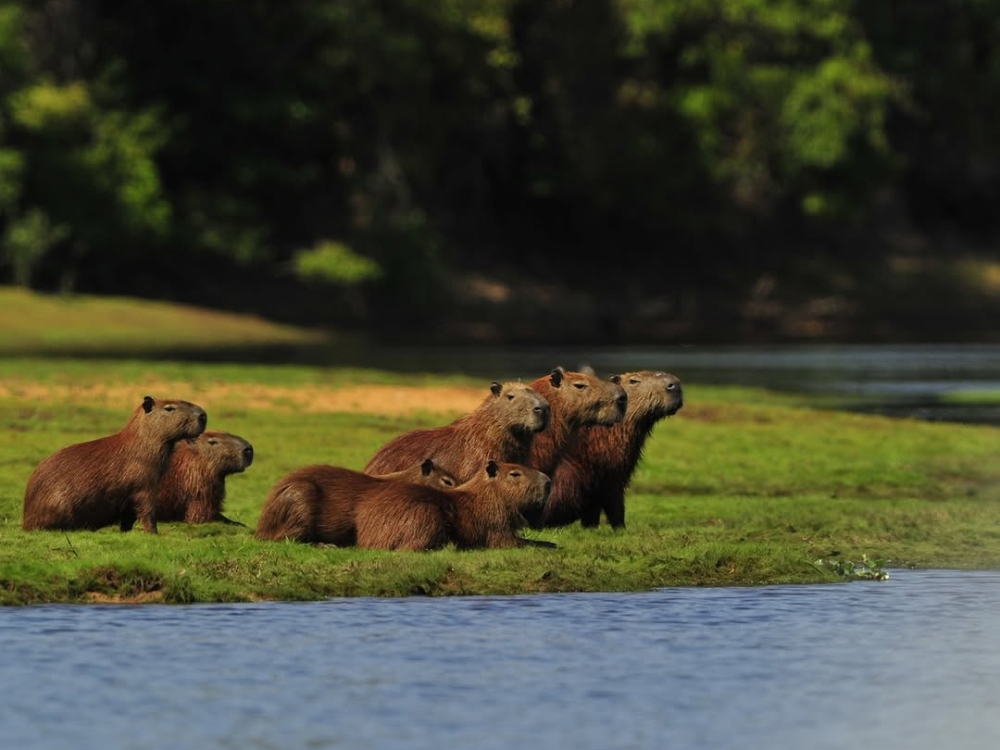
.
3. Caiman: The Stealthy Reptile
Caimans are found throughout the Pantanal, along riverbanks, in muddy lagoons, and sometimes even crossing walking trails. As part of the alligator family, they play a vital role in the ecosystem by regulating fish populations and serving as prey for top predators like jaguars and anacondas.
Notable characteristics of caimans in this region:
- The Yacare caiman is the most common species in the region.
- Males can grow up to 3 meters in length.
- They’re often seen basking with mouths open to regulate body temperature.
- Six different caiman species are found across South America.
- Did you know there are more caimans than people in the Pantanal? The region is home to over 10 million caimans, while fewer than 1 million people live in the surrounding area.
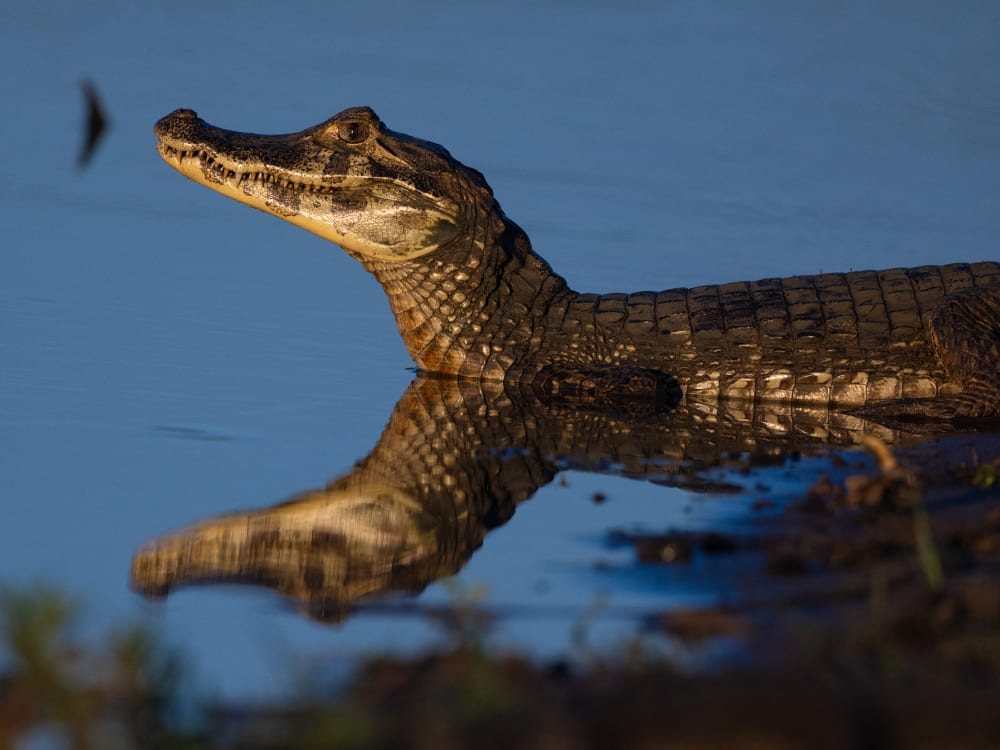
Photo: Keith Ladzinski
4. Giant Otters: Playful and Endangered
For many people, Giant otters are the most charismatic mammals in the Pantanal. Measuring up to 1.7 meters in length, they live in close-knit family groups that are highly vocal, communicating with a variety of squeals, barks, and whistles. Their presence is a highlight of many wildlife tours and represents one of the most fascinating Pantanal wildlife species.
What makes giant otters stand out:
- They feed almost exclusively on fish, consuming several kilograms per day.
- The group hunts cooperatively, using teamwork to corner prey.
- Their webbed feet, dense fur, and streamlined bodies make them expert swimmers.
- They are considered endangered and rely on protected habitats to survive.

@chamiltonjames
5. Macaws: Nature’s Most Colorful Messengers
The Pantanal is home to some of the world’s most stunning macaws, including the hyacinth macaw, the largest flying parrot on the planet. With a wingspan over 1.2 meters and bright blue feathers, they’re hard to miss. You’ll also find red-and-green and blue-and-yellow macaws nesting in trees or flying in pairs.
Key features of macaws in the Pantanal:
- Form lifelong monogamous pairs.
- Their calls are loud and distinctive, echoing across the canopy.
- They feed on fruits, seeds, and nuts, cracking tough shells with powerful beaks.
- Observing macaws in the wild is a top highlight for birdwatchers interested in Pantanal wildlife species.

Photo: Felipe Castelllari
6. Anaconda: The Mythical Serpent
We can say that Anacondas are among the most mysterious and misunderstood creatures in the Pantanal. These massive constrictor snakes can grow up to 6 meters long and usually dwell in marshes and shallow waters. Despite their size, they are stealthy and rarely seen.
Facts that shed light on their true nature:
- These snakes are non-venomous but kill by coiling and suffocating their prey.
- Their diet includes fish, birds, capybaras, and even caimans!
- Though feared in myths and media, attacks on humans are extremely rare. So, you don’t have to worry about our Anaconda friends.
- Their elusive behavior makes spotting one a rare wildlife moment.
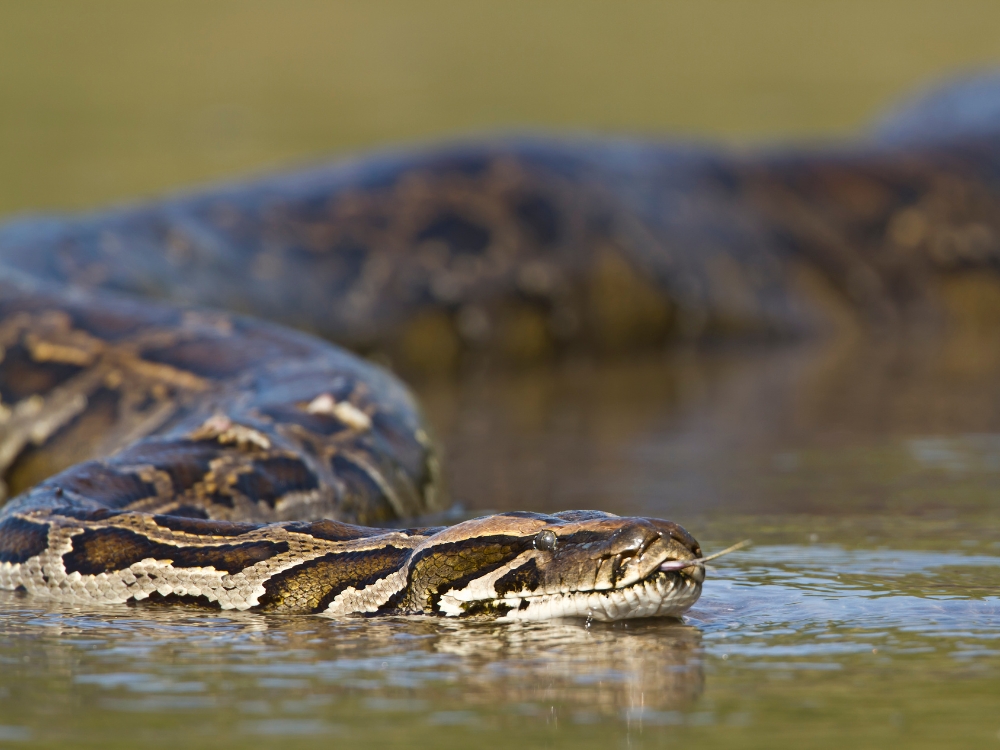
Photo: Utopia_88
Fun fact: One of them even made it to Hollywood fame in the 1997 thriller Anaconda; though the real ones are far less dramatic.
7. Piranhas: Small but Fierce
Piranhas are well-known inhabitants of the Pantanal’s rivers and lakes. Famous for their sharp teeth and strong bite, they usually feed on fish, insects, and even plants. Despite their scary reputation, they rarely attack humans and prefer to avoid disturbances.
What you should know about piranhas:
- They are most aggressive during the dry season when food is limited.
- Their powerful jaws allow them to tear through flesh quickly.
- Many species are omnivorous and feed on plants as well.
- Catch-and-release fishing is possible with guidance from local experts.
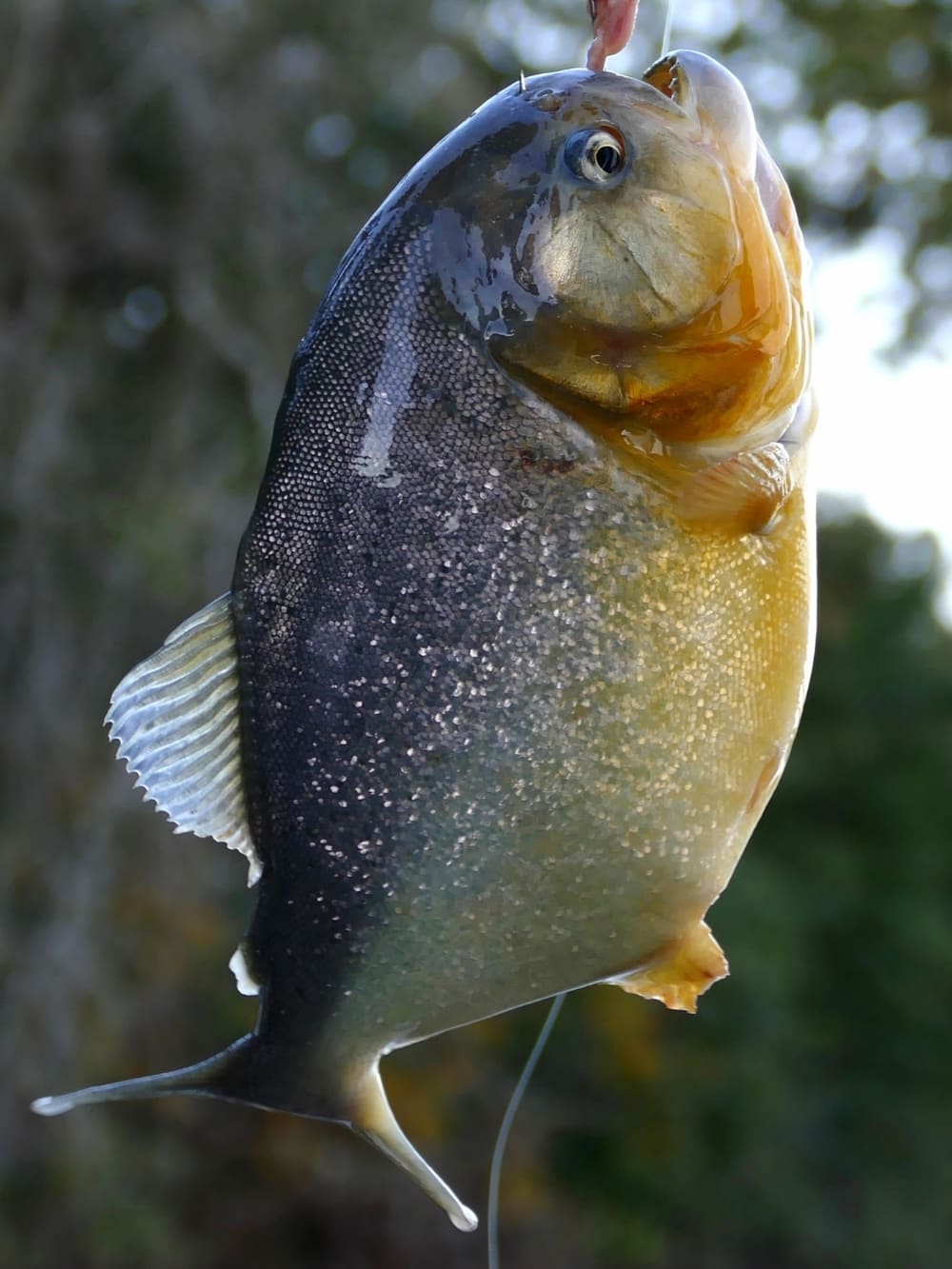
Photo: Bernard Dupont
8. Ocelot: The Elusive Small Cat
The ocelot is a small, spotted wild cat native to South America. Mostly nocturnal and elusive, it hides in dense vegetation, which makes encounters in the wild quite rare. Still, this graceful feline plays an essential role in maintaining ecological balance.
Quick facts about ocelots in the Pantanal:
- They prey on small mammals, birds, and reptiles, helping control their populations.
- Solitary and territorial, they’re about the size of a house cat but more muscular.
- Sightings are rare but possible during night safaris or via camera traps.
- Like many Pantanal wildlife species, their habitat is key to survival.
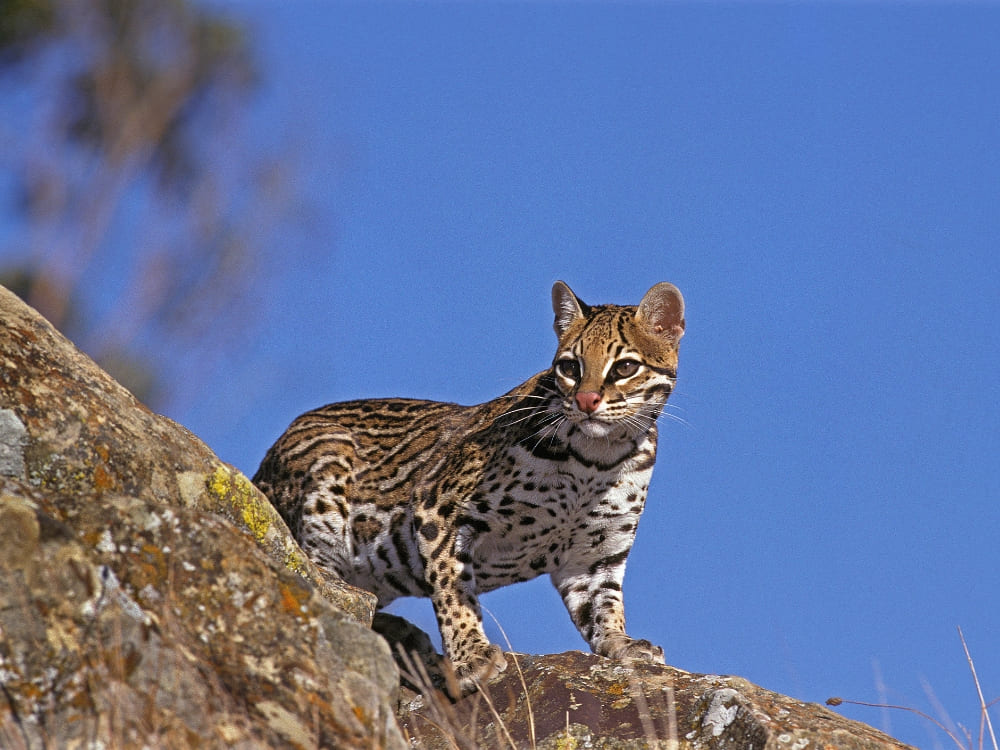
Photo: slowmotiongli
9. Marsh Deer: The Pantanal’s Gentle Giant
The marsh deer is the biggest deer species in South America and is perfectly adapted to life in wetland environments. Its long legs allow it to move easily through flooded areas, while its reddish coat helps it blend into the tall grasses of the Pantanal.
Key facts about the marsh deer:
- Most active during dawn and dusk, and generally shy around humans.
- Its population is vulnerable due to habitat loss and disease.
- Protected areas in the Pantanal provide a vital refuge for the species.
- Their presence is often seen as an indicator of a healthy ecosystem: just one of many important Pantanal wildlife facts.
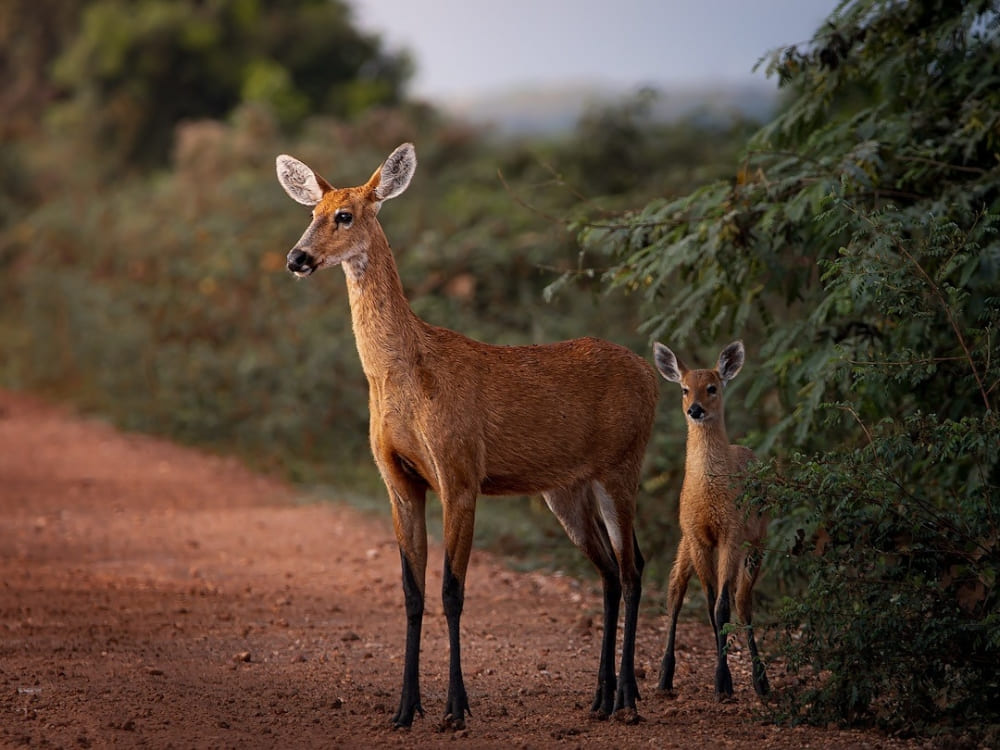
@rafamattosphoto
10. Toco Toucan: The Bright-Billed Icon
A famous cultural Brazilian symbol, the toco toucan stands out with its enormous orange bill and striking black-and-white plumage. Despite its size, the beak is surprisingly light and serves multiple purposes, from regulating heat to reaching fruits on distant branches.
Interesting traits of the toco toucan:
- It feeds on fruit, insects, and occasionally small animals.
- The large beak helps control body temperature in hot climates. Nothing is by chance here.
- Their croaking call is most often heard at dawn and dusk.
- They nest in tree cavities and are frequently seen perched high in the canopy.
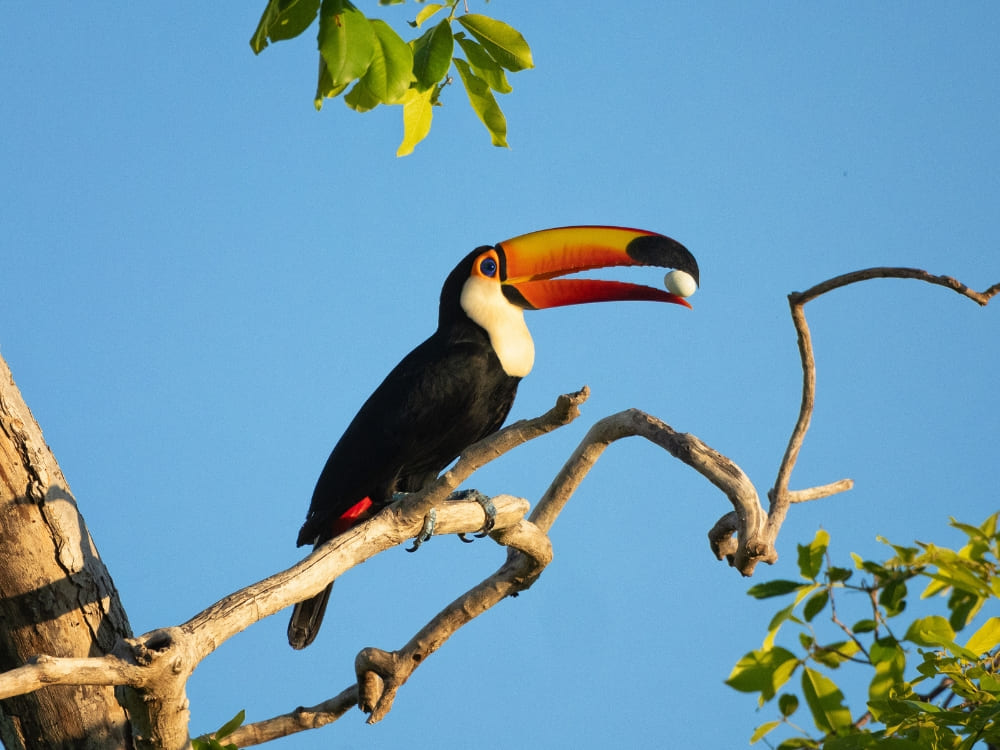
.
11. Lowland Tapir: The Forest Gardener
Lowland tapirs are the largest land mammals in South America and play a crucial role in preserving biodiversity. By spreading seeds through their droppings, they help regenerate forests and maintain healthy ecosystems in the Pantanal.
Here’s what makes tapirs unique:
- They feed on fruits, leaves, and aquatic plants.
- Tapirs defecate in water as a strategy to avoid predators.
- They are mostly nocturnal and prefer solitude.
- Good swimmers, they often rest submerged during the hottest parts of the day.
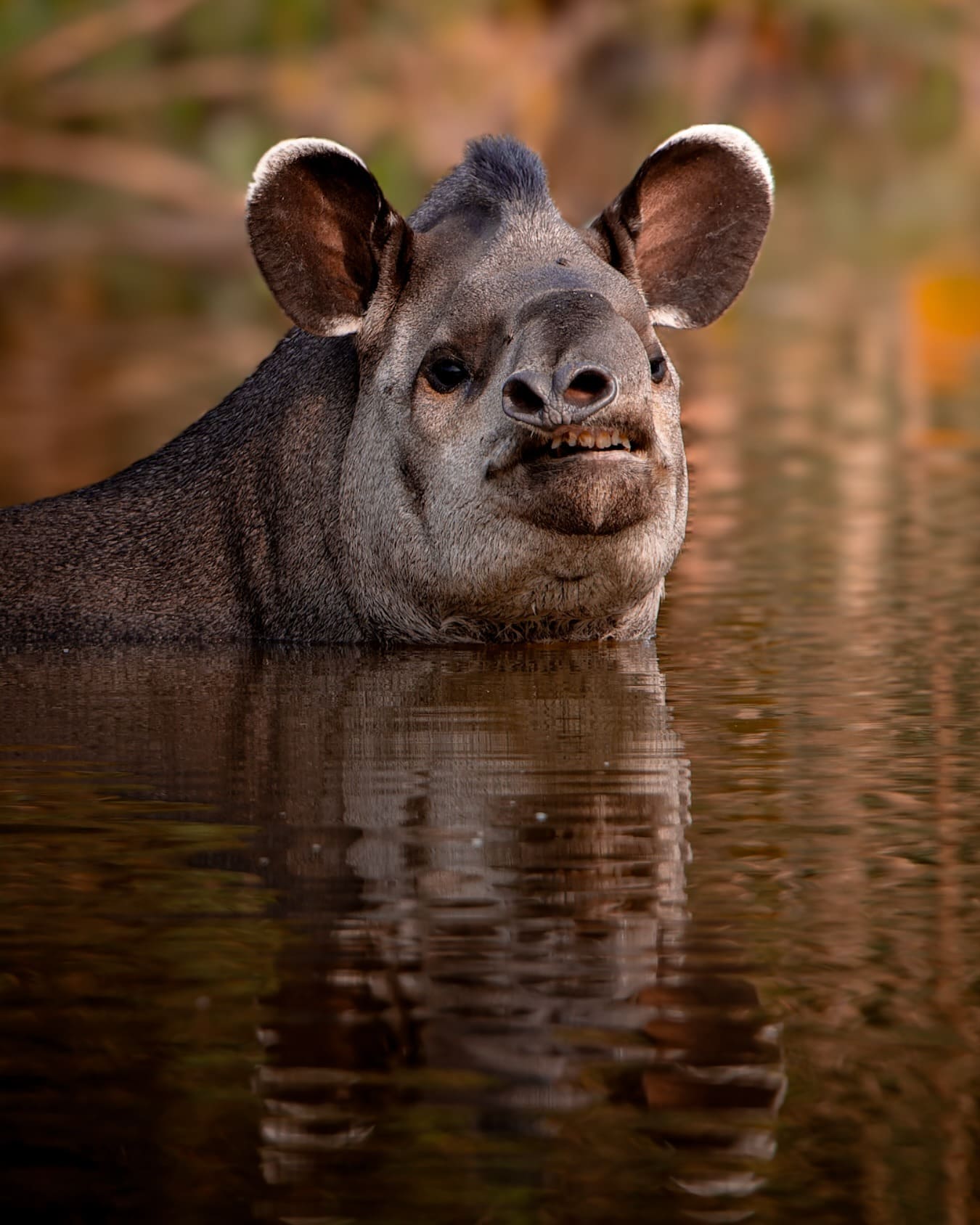
@rafamattosphoto
12. Ring-Tailed Coatis: The Curious Foragers
Ring-tailed coatis are social, daytime mammals often seen in groups foraging along trails and forest edges. With long, flexible snouts, they dig through leaves and soil in search of insects, fruit, and small animals.
Some interesting things about coatis:
- Their upright, ringed tails help group members stay visually connected.
- Highly adaptable and often seen near human areas like lodges.
- Curious and clever, they explore everything, but feeding them is discouraged.
- They play an important role in the ecosystem by controlling insect populations.
- Their clever foraging behavior adds to the charm of observing Pantanal wildlife animals and facts in action.

Photo: Castka
13. Giant Anteater: A Walking Marvel
Giant anteaters are among the most unusual and fascinating mammals in the Pantanal. With no teeth and a 60-centimeter-long sticky tongue, they can consume tens of thousands of ants and termites a day.
A few things that set giant anteaters apart:
- Their powerful claws are used to tear open nests and for self-defense.
- They are solitary and mostly active during the early morning hours.
- Their bushy tail, unique coat, and slow gait make them easy to spot.
- Despite their size, they are non-aggressive and shy around humans.

Photo: Felipe Castellari
14. Maned Wolf: The “Fox on Stilts”
The maned wolf isn’t a wolf or a fox, but a distinct species in its own family. With long, slender legs and a reddish coat, it walks elegantly through the tall grasses of the Pantanal, often at dusk or night.
Distinctive traits of the maned wolf:
- It has a black mane, tall legs, and fox-like features.
- Its diet is omnivorous, including rodents, birds, and fruit like the “wolf apple.”
- Mostly nocturnal, it’s rarely seen, but its ghostly call can be heard at night.
- Its solitary and shy nature makes any sighting extra special.
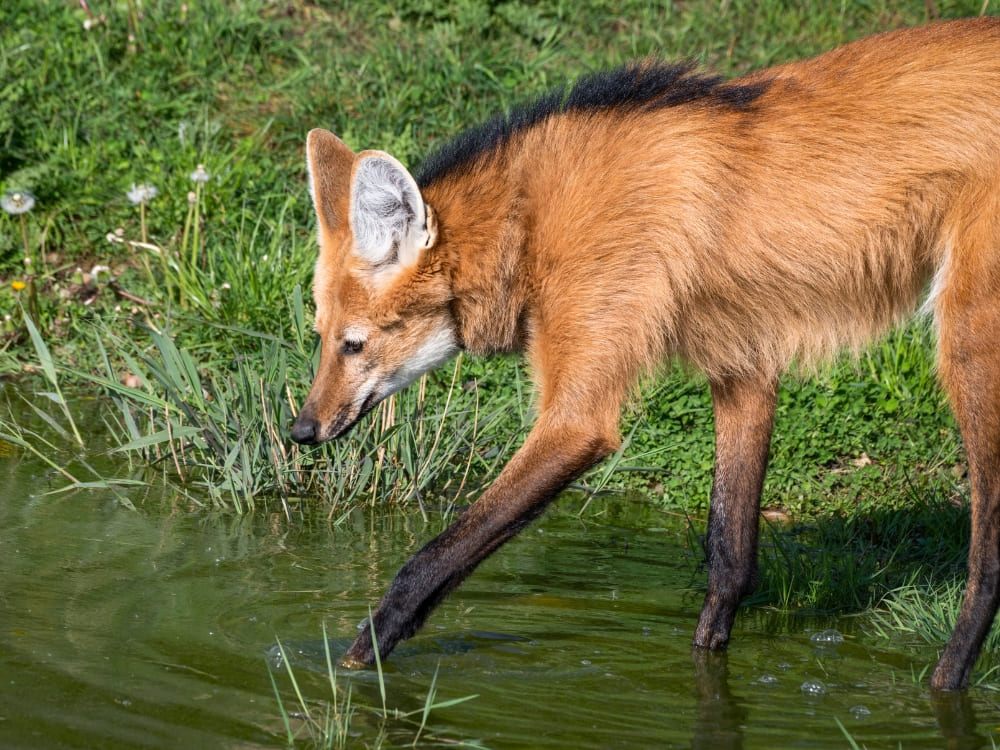
Photo: Ian Fox
15. Jabiru Stork: Symbol of the Pantanal
The jabiru stork is the tallest flying bird in South America and a striking emblem of the Pantanal. With its black-and-red neck and massive wingspan, it’s often seen wading through shallow wetlands looking for fish, frogs, and other aquatic prey.
Why the Jabiru stork stands out:
- They form lifelong pairs and reuse the same nest year after year.
- Nests are built in tall trees and can reach over a meter wide.
- Their feeding grounds are most exposed during the dry season.
- Their graceful flight and size make them a favorite among birdwatchers.
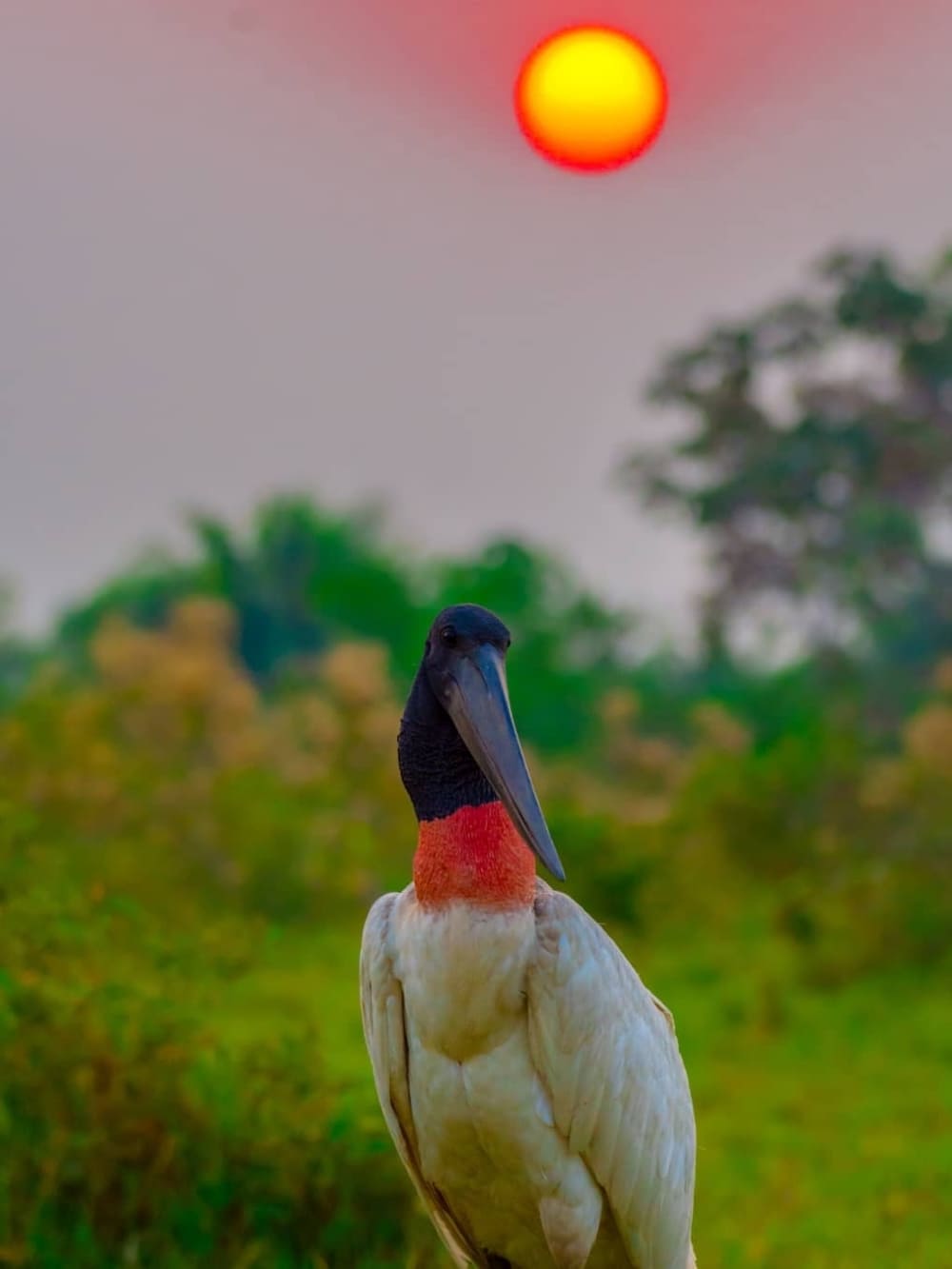
@luiz4mendes
Pantanal Wildlife Plants: Life Beneath the Surface
While the Pantanal is famous for its animals, its vegetation is equally fascinating. The region is a mosaic of ecosystems, seasonally flooded grasslands, savannas, forests, and aquatic habitats. This diversity allows plants like Carandá Palms, Ipê Trees, and aquatic species like water hyacinth to thrive.
Notable plant species of the Pantanal:
- Buriti Palm (Mauritia flexuosa): Palm tree with edible fruits, thrives in wet soils.
- Aroeira (Schinus terebinthifolia): Medicinal tree with pink berries.
- Cambará (Vochysia divergens): Common in flooded forests, aids in regeneration.
- Sucuriú Grass (Paspalum spp.): Native grass, vital for herbivores.
- Jacaré Wood (Calophyllum brasiliense): A moisture-loving tree that stabilizes soil.
These Pantanal wildlife plants not only provide food and shelter for animals but also play a vital role in regulating the water cycle and filtering pollutants. The interaction between flora and fauna is what makes the Pantanal so ecologically resilient.
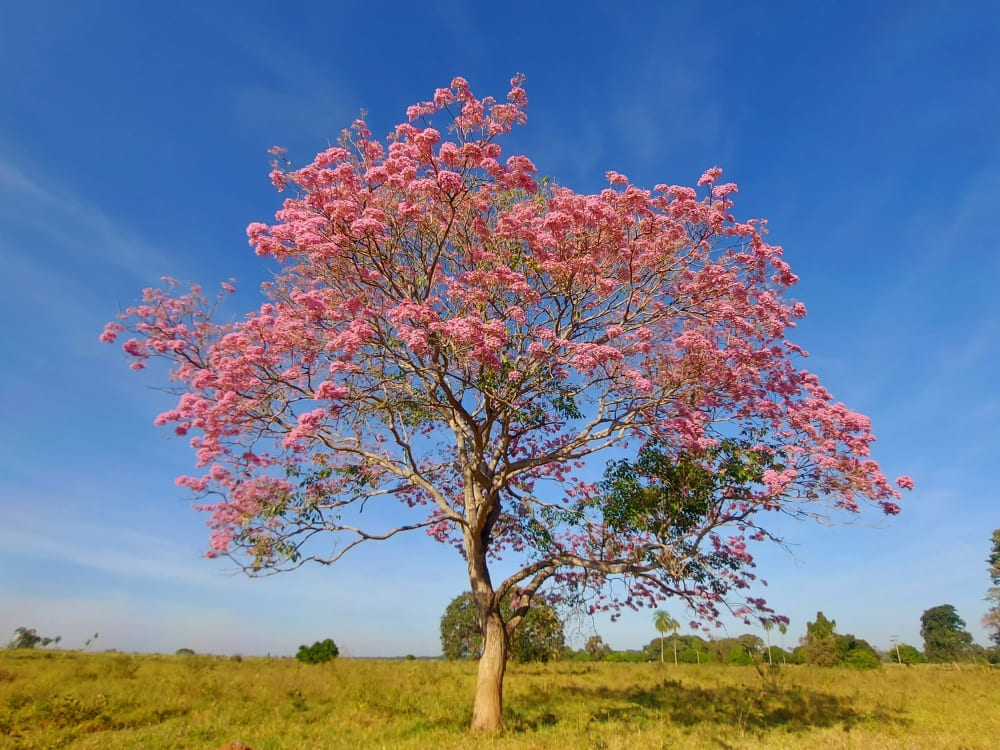
.
When Is the Best Time to Visit the Pantanal?
The ideal time for wildlife viewing is between May and October, when the dry season reduces water levels and animals gather around remaining lagoons and rivers. This makes sightings of jaguars, capybaras, caimans, and birds much more frequent.
During the rainy season (November to March), the landscape becomes lush and green, and birdwatching is particularly rewarding, but access to remote areas can be more difficult.
👉 Read our complete guide: When is the Best Time to Visit the Pantanal
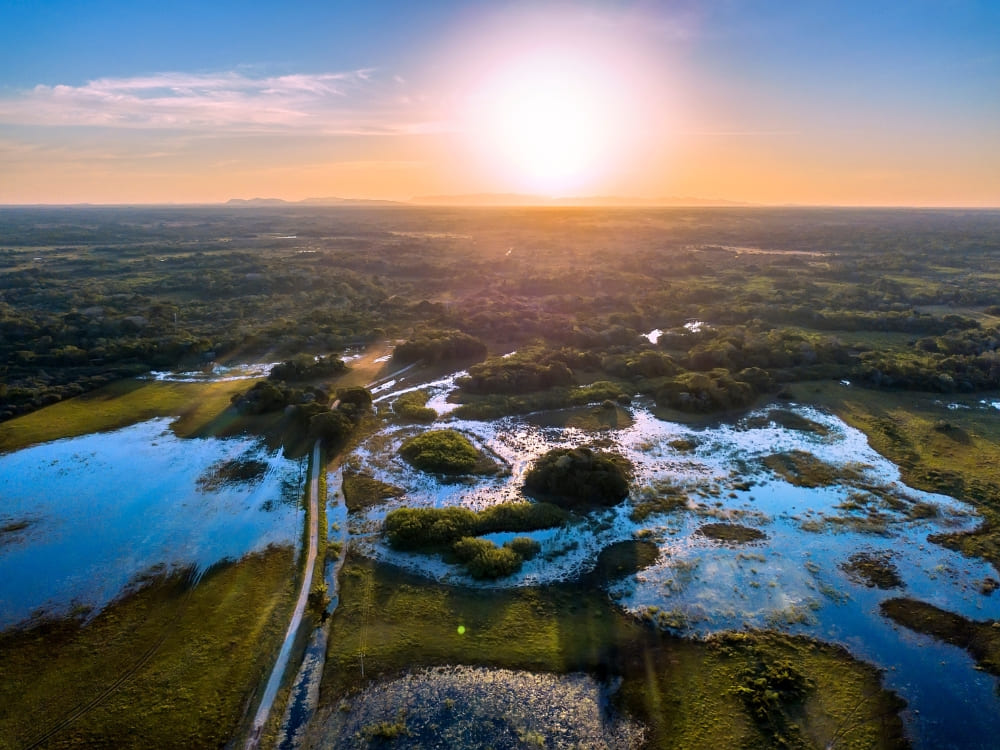
Photo: Leo Mercon
How to Get to the Pantanal?
The Pantanal is divided into two main access regions: North and South. To visit the North Pantanal, fly to Cuiabá, then travel by car to areas like Poconé and Porto Jofre. To explore the South Pantanal, fly to Campo Grande, with access to regions like Miranda and Aquidauana.
From either base, you can reach ecolodges and reserves via 4×4 vehicles, boats, or small aircraft. Transfers are typically arranged by tour operators or accommodations.
👉 Check out our Travel Guide on How to Get to the Pantanal
Pantanal North or South: Which Region Is Best for Wildlife?
The North Pantanal (Porto Jofre and Poconé) is best known for Jaguar sightings and boat safaris along the Cuiabá River. It’s ideal for photographers and travelers focused on Jaguars and aquatic birdlife.
The South Pantanal (Miranda and Aquidauana) offers more terrestrial safaris by 4×4 or horseback and is great for a broader range of mammals, birds, and reptiles. It’s also easier to access year-round due to better infrastructure.
Important note: While the Pantanal provides one of the best settings in the world to observe wildlife, it’s still nature, so sightings are never 100% guaranteed. That’s part of what makes every moment so authentic and special!
👉 Learn more about the differences between North and South Pantanal in our blog post
- Photo: Reisegraf
- Photo: Felipe Castellari
Plan Your Wildlife Adventure with PlanetaEXO
As you see, there are a lot of amazing Pantanal wildlife facts. Whether you’re dreaming of watching a jaguar swim across a river or discovering rare plants and animals on foot, the Pantanal offers an experience unlike any other. The rich biodiversity, including lesser-known species and Pantanal wildlife plants, makes this one of the world’s top ecotourism destinations.
At PlanetaEXO, we work with expert local guides and carefully selected partners committed to sustainability and conservation. From custom itineraries to responsible lodging, we’ll help you explore the Pantanal in a way that’s meaningful, immersive, and unforgettable.
Don’t wait any longer: Talk to our team to find the Pantanal trip that best fits your travel style!

